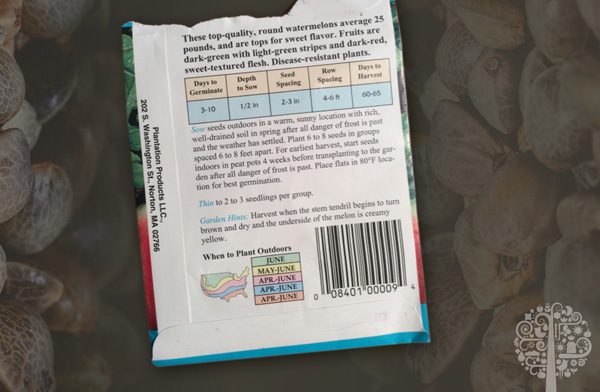Seed starting is an exciting time of year, and for many people, that time has come! With the world of gardening experiencing a massive boom in recent months, there are more newbie growers than ever this year. The best place to start is by choosing the crops you love to eat. If growing flowers, select varieties you find beautiful. Next, understanding the seed packet is essential, which isn’t always easy.

If you’re new to the veggie patch, I recommend looking at Jessica Sowards’ new book, The First-Time Gardener: Growing Vegetables.
Seed Packets
Not all seed packets are equal, and you’ll find some companies do a much better job at providing information than others.
Of course, it’s challenging to squeeze all pertinent details onto such a tiny space, so I always like to research the crop I’m growing to learn its history and the conditions it needs to thrive.
Still, seed packets generally offer some valuable tips, and there are a few critical points you want to be mindful of when getting ready to start your seeds.
Start Date
The start date is always the first thing I look for when selecting seeds. Crops like tomatoes, peppers, and eggplants need to be started indoors well in advance. Some varieties of eggplant, for example, require a head start of up to 12 weeks before your region’s last frost date. The same is true for peppers, which are notoriously slow to start.
Know your region’s last frost date and count backwards from there to know when you should be getting your indoor growing game on. The last date of frost changes every year, so be sure to look up your agricultural zone on a reputable website.
Days to Maturity
Knowing how long a specific crop needs from the date of transplant to the first harvest is an essential piece of information. For example, if you have a short growing season in a cooler climate, there’s no use growing a tropical plant that needs extended periods of heat and sunshine. Note that the days to maturity is always counted from the date of transplant, not the date you start the seeds.
Planting Depth
If you get the planting depth wrong, there’s a good chance you’ll never see your babies sprout. It’s important to get this detail right because seeds have just enough energy to make it to the soil’s surface, and then they need sunlight to continue growing. While any well-designed seed packet will provide the recommended planting depth, in her book, Sowards says a general rule of thumb is that you should plant any seed twice as deep as it is wide.
Spacing
If starting seeds indoors, you don’t need to worry about spacing right away. However, when it’s time for transplanting or direct sowing outdoors, it’s essential to know how far apart you should be placing your plants. This rule applies raised beds, containers, and in-ground gardens. If too close together, air circulation suffers, and your plants will be more prone to pests and diseases. Yields will go down, and nobody wants that.
Growing Conditions
Finally, why go through the effort of starting seeds to put them in a spot of the yard or balcony that doesn’t give them what the need? Many seed packets will tell you what kind of soil a specific plant likes and whether it can handle shade, part-shade, or needs full sun. Select the crops you grow based on the conditions you can offer them. There’s no use growing spinach, for example, when you have no shady areas to keep it from bolting. The same is true for tomatoes, eggplant, and peppers if you can’t give them 6-8 hours of full sun.
… sometimes you get urge to start tomatoes. too early… they seem to like cooler temps after they germinate … for better root development too while the garden warms up … z 6 here …